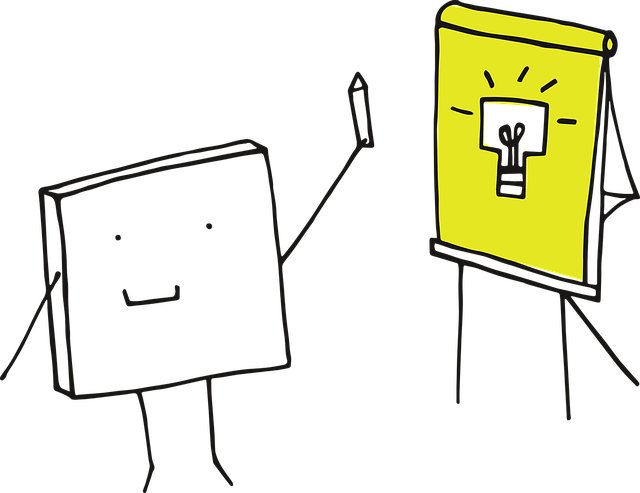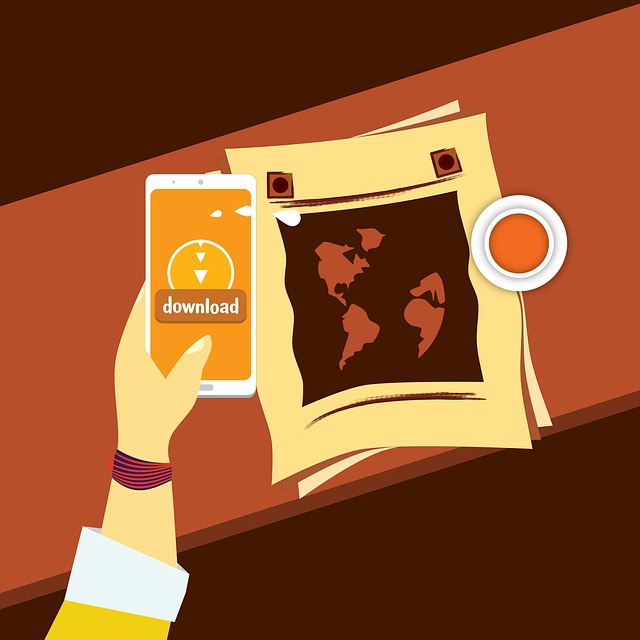Are you tired of the same old brainstorming techniques that yield lackluster results? Do you wish there was a way to tap into your creative potential and generate groundbreaking ideas effortlessly? Look no further! In this exciting article, we will introduce you to the fascinating world of visual brainstorming and elevate your creative thinking to new heights. Get ready to unleash the power of your visual mind as we unveil the secrets behind a Visual Thinking Masterclass: Visual Brainstorming Unveiled.
Contents
- Introduction: Unlocking the Power of Visual Brainstorming in Creative Thinking
- Unleashing Creativity: Exploring the Impact of Visual Thinking in Brainstorming Sessions
- Visualizing Ideas: How Visual Brainstorming Enhances Problem-Solving Abilities
- The Art of Visual Mapping: A Step-by-Step Guide to Boosting Productivity and Collaboration
- From Doodling to Brilliance: Harnessing the Potential of Visual Brainstorming Techniques
- Building Bridges Through Imagery: Connecting Concepts and Inspiring Innovation
- Maximizing Engagement: Incorporating Visual Brainstorming Activities into Team Meetings
- Charting the Course: Navigating the Benefits and Best Practices of Visual Brainstorming
- Frequently Asked Questions
- Insights and Conclusions
Introduction: Unlocking the Power of Visual Brainstorming in Creative Thinking
Welcome to a world where imagination knows no bounds and creativity flourishes through the art of visual brainstorming. In today’s fast-paced and ever-evolving society, the ability to think outside the box is more crucial than ever. Traditional brainstorming techniques may have their merits, but it’s time to embrace a more captivating and impactful form of ideation – visual brainstorming.
Visual brainstorming, as the name suggests, harnesses the power of visuals to ignite our imaginations and unlock our creative potential. It is a revolutionary method that transcends the constraints of traditional thinking, allowing ideas to flow freely and connections to be made in unexpected ways. With visual brainstorming, the possibilities are endless and the outcomes extraordinary. Let’s dive deeper into this mesmerizing realm and discover the myriad benefits it holds:
- Enhanced idea generation: Visual brainstorming stimulates both the left and right hemispheres of the brain, enabling a holistic approach to idea generation. As images and colors come to life, new connections and associations emerge, leading to a wealth of fresh ideas.
- Improved engagement: Humans are visual creatures, naturally drawn to captivating visuals. Visual brainstorming captivates the mind, keeping participants engaged and excited. It fosters a collaborative environment where ideas can thrive and flourish, making the brainstorming process an enjoyable and interactive experience.
- Efficient communication: Visuals have the power to transcend language and cultural barriers. By using images and symbols, visual brainstorming promotes effective communication, transcending the limitations of words alone. This allows for clearer expression and a deeper understanding of ideas, making collaboration seamless and efficient.
Are you ready to embark on a journey that will transform the way you think, inspire innovation, and uncover new realms of creativity? Prepare to unlock the power of visual brainstorming, where your imagination becomes your greatest asset.
Unleashing Creativity: Exploring the Impact of Visual Thinking in Brainstorming Sessions
When it comes to brainstorming, the power of visual thinking cannot be underestimated. In today’s fast-paced world, where ideas need to be generated quickly and efficiently, incorporating visual elements into brainstorming sessions can prove to be a game-changer. Visual thinking stimulates the creative part of our brains, allowing us to make connections, explore possibilities, and generate innovative ideas.
But how exactly does visual thinking impact brainstorming? Let’s explore some key benefits:
- Enhanced collaboration: Visual aids such as whiteboards, mind maps, and flowcharts make it easier for team members to share and build upon each other’s ideas. By visualizing concepts, connections, and patterns, participants can engage in more meaningful discussions and achieve a deeper level of collaboration.
- Improved problem-solving: The use of visual elements enables individuals to approach problems from different perspectives. Drawing diagrams, sketches, or infographics can help break down complex issues, facilitating better problem-solving techniques. Visual thinking allows us to see the bigger picture and identify potential solutions that might have gone unnoticed otherwise.
- Stimulated creativity: Visuals ignite our imagination and stimulate creative thinking. When we see our ideas come to life through images, colors, and diagrams, it triggers new thought patterns, generating fresh and innovative concepts. This enhances creativity in brainstorming sessions and encourages participants to think outside the box.
Incorporating visual thinking into brainstorming sessions can transform them into dynamic and productive experiences. By leveraging the power of visuals, teams can unleash their collective creativity, achieve greater problem-solving capabilities, and ultimately generate game-changing ideas that drive innovation forward.
Visualizing Ideas: How Visual Brainstorming Enhances Problem-Solving Abilities
In today’s fast-paced world, problem-solving is a critical skill that can make all the difference in both personal and professional contexts. However, coming up with innovative solutions to complex problems can often feel like a daunting task. This is where visual brainstorming comes into play. By harnessing the power of visuals, individuals can improve their problem-solving abilities and enhance their creative thinking.
Visual brainstorming techniques, such as mind mapping and concept mapping, provide an effective way to organize thoughts and ideas spatially. This allows individuals to perceive the relationships between various elements and identify patterns that may not have been immediately apparent. By visually representing ideas, individuals can gain a clearer understanding of the problem at hand and uncover alternative viewpoints that they may not have considered before. Moreover, the act of visually mapping out ideas stimulates the brain’s visual cortex, which enhances cognitive processing and improves memory retention.
- Visual brainstorming allows individuals to think both analytically and creatively, finding unique solutions to problems.
- The use of colors, symbols, and images in visual brainstorming can trigger emotions and inspire new ideas.
- When working collaboratively, visual brainstorming facilitates effective communication, encouraging participation and collaboration among team members.
With its ability to spark innovative thinking and foster collaboration, visual brainstorming has become a valuable problem-solving tool in a wide range of fields, including marketing, design, education, and even scientific research. So, try incorporating visual brainstorming techniques into your problem-solving process, and watch as your ability to generate insightful solutions improves!
The Art of Visual Mapping: A Step-by-Step Guide to Boosting Productivity and Collaboration
Visual mapping is a powerful technique that can significantly enhance productivity and foster effective collaboration among individuals and teams. By visually representing ideas, concepts, and relationships, visual mapping enables us to better understand complex information and generate new insights. Here is a step-by-step guide to help you harness the art of visual mapping and unleash your creative potential.
1. Choose your preferred visual mapping tool: There are several digital and non-digital visual mapping tools available, each offering unique features and functionalities. Some popular options include mind mapping software, whiteboards, and even pen and paper. Select a tool that aligns with your needs and preferences.
2. Start with a central idea: Begin your visual map by identifying and representing your central idea. This could be a problem you’re trying to solve, a goal you want to achieve, or a concept you want to explore. Place the central idea at the center of your map and use bold font or a distinct color to make it stand out.
3. Add branches and sub-branches: Expand on your central idea by adding branches and sub-branches to represent related concepts or categories. Each branch should be connected to the central idea using lines or arrows. Use bullet points or short phrases to label each branch, ensuring clarity and easy understanding.
4. Organize information hierarchically: Arrange your branches and sub-branches in a hierarchical manner, with the most important or relevant ideas closer to the central idea. This helps to visually prioritize information and create a logical structure within your map.
Visual mapping can revolutionize the way you approach problem-solving, brainstorming, and collaborating with others. Incorporate this art into your workflow to boost productivity, stimulate creativity, and promote effective communication. So, why not grab your favorite visual mapping tool and start mapping out your thoughts and ideas today?
From Doodling to Brilliance: Harnessing the Potential of Visual Brainstorming Techniques
Visual brainstorming techniques, often dismissed as mere doodling, hold an immense untapped potential in unlocking the creative genius within us. This dynamic and interactive approach to idea generation not only stimulates the imagination but also enhances problem-solving skills. By integrating visuals into the brainstorming process, individuals can tap into different areas of the brain and unlock new possibilities.
So how can we make the most of these techniques?
- Start with a blank canvas: Whether it’s a sketchbook or a digital tablet; beginning with a blank page empowers your mind to think freely and explore new territory.
- Embrace doodling: Doodling is not a distraction, but rather a way for the brain to make connections and foster creativity. Let your pen glide on the paper and discover unexpected ideas along the way.
- Use mind mapping: Creating a mind map allows you to visually organize your thoughts and visually see the relationships and connections between ideas. Begin with a central concept and branch out with related ideas, letting your mind flow naturally.
- Think in images: Challenge yourself to articulate ideas using images instead of words. Engaging different parts of your brain activates the visual thinking process, fostering innovative ideas.
By embracing visual brainstorming techniques and unleashing our creativity, we can revolutionize the way we solve problems and generate ideas. It’s time to transform the doodles into brilliance and harness the full potential of our visual thinking abilities.
Building Bridges Through Imagery: Connecting Concepts and Inspiring Innovation
In this fast-paced world of technology and endless information, we often find ourselves seeking new ways to connect and communicate ideas. One powerful tool that remains timeless is the use of imagery. Images can transcend language barriers, spark emotions, and serve as a bridge that links concepts together. From ancient cave paintings to modern-day advertising campaigns, the power of visual representation has always been at the core of human expression and innovation.
Imagery has the unique ability to transcend cultural boundaries and unite people from all walks of life. When words fall short or struggle to convey complex ideas, a single image can capture the essence and reach a universal understanding. It allows individuals to bypass language barriers and connect on a deeper level. By utilizing visuals, we can effectively communicate complex concepts in a simpler, more relatable manner, inspiring innovation and driving progress in countless fields.
Maximizing Engagement: Incorporating Visual Brainstorming Activities into Team Meetings
Engaging team members during meetings is crucial for productive collaboration and maximum efficiency. One effective way to boost engagement is by incorporating visual brainstorming activities into your team meetings. These activities not only stimulate creative thinking but also encourage active participation and enhance team bonding. Below, we have compiled a few exciting visual brainstorming activities that you can try in your next team meeting:
- Collage Creation: Divide your team into smaller groups and provide them with magazines, newspapers, glue sticks, and scissors. Ask each group to create collages that represent their ideas or solutions to a specific problem or project. After a given time, have each group present their collage and explain the reasoning behind their choices. This activity not only encourages creativity but also promotes effective communication and teamwork.
- Mind Mapping: Start by presenting a central idea or problem and ask team members to create a mind map using a whiteboard or online collaborative tool. Encourage everyone to contribute by adding branches and sub-branches with their thoughts, ideas, and solutions. This visual representation not only helps to organize thoughts but also allows for better understanding and exploration of different perspectives. Mind mapping is an effective way to promote collaboration and generate a variety of ideas.
Visual brainstorming, also known as mind mapping or visual thinking, is an innovative approach to ideation that harnesses the power of visual cues to stimulate creative thinking and problem-solving. By leveraging images, colors, shapes, and spatial relationships, visual brainstorming taps into the brain’s inherent ability to make connections and uncover new insights. This article explores the numerous benefits of visual brainstorming and provides practical tips to maximize its effectiveness.
One of the key advantages of visual brainstorming is its ability to enhance collaboration and communication among team members. By visually representing ideas, concepts, and relationships, participants can easily share and build upon each other’s thoughts in a more visual and intuitive manner. Furthermore, visual brainstorming helps overcome language barriers and facilitates cross-cultural collaboration. Through the use of pictorial symbols and universally recognized visual elements, it enables diverse teams to express their ideas in a universally understandable way.
When it comes to best practices, it’s crucial to create a visually engaging and organized mind map. Ensure the central idea or problem statement is placed at the center of the visual, serving as the focal point. Use bold colors, distinct shapes, and relevant images to represent different ideas, subtopics, or participants. This not only makes the mind map visually appealing but also aids memory recall and stimulates creative thinking. Additionally, maintaining simplicity and clarity throughout the visual brainstorming process allows for better comprehension and reduces the risk of overwhelming participants.
Another best practice is to encourage participants to think freely and divergently. It’s essential to create an open and non-judgmental atmosphere where all ideas are welcomed without criticism. This stimulates creativity and encourages participants to explore unconventional connections and possibilities. Encourage participants to trust their instincts and let their ideas flow freely onto the visual canvas. Furthermore, periodically reviewing and revising the mind map throughout the brainstorming session allows for continuous improvement and refinement of ideas.
Frequently Asked Questions
Q: What is “Visual Brainstorming Unveiled: A Visual Thinking Masterclass” all about?
A: “Visual Brainstorming Unveiled: A Visual Thinking Masterclass” is an article that delves into the concept of visual brainstorming, offering readers a comprehensive understanding of this innovative thinking technique.
Q: Why is visual brainstorming considered a powerful tool for generating ideas?
A: Visual brainstorming harnesses the extraordinary power of visual thinking, enabling individuals to tap into their creative potential by using images, colors, and spatial relationships. This technique goes beyond traditional brainstorming methods by stimulating different areas of the brain and fostering a more holistic approach to idea generation.
Q: How does visual brainstorming differ from traditional brainstorming?
A: Unlike traditional brainstorming, which primarily relies on verbal communication, visual brainstorming incorporates visual elements to enhance the ideation process. By leveraging the brain’s innate ability to process visual information, this method engages diverse cognitive functions, resulting in more innovative and nuanced ideas.
Q: What are the benefits of incorporating visual thinking in brainstorming sessions?
A: Visual thinking adds depth and richness to brainstorming sessions by allowing participants to explore and communicate ideas in a more vivid and interconnected manner. This approach facilitates better understanding, collaboration, and the extraction of insights that may have otherwise been overlooked. Additionally, visual brainstorming encourages more participatory engagement and provides a visual reference point for ongoing discussions.
Q: Can anyone learn visual brainstorming, or is it restricted only to individuals with artistic abilities?
A: Visual brainstorming is accessible to everyone, irrespective of their artistic abilities. While a basic understanding of drawing concepts may help, the focus of visual brainstorming lies in using visual elements to communicate ideas effectively. It is about leveraging a visual language that anyone can learn, regardless of their artistic talent.
Q: Are there any practical tips provided in the article for mastering visual brainstorming?
A: Absolutely! “Visual Brainstorming Unveiled: A Visual Thinking Masterclass” presents readers with practical tips and techniques to hone their visual brainstorming skills. From using mind maps and sketching to incorporating color psychology and spatial organization, this comprehensive guide equips readers with all the tools they need to become proficient visual thinkers.
Q: Is there any evidence to support the effectiveness of visual brainstorming?
A: Numerous studies have highlighted the efficacy of visual thinking in various fields, from business to education. Research indicates that incorporating visual elements in brainstorming sessions enhances memory retention and problem-solving abilities. Furthermore, visual brainstorming has been found to foster greater creativity, enabling individuals to generate a higher quantity and quality of ideas.
Q: Can visual brainstorming be applied to different domains, such as business or education?
A: Yes, visual brainstorming is a highly versatile technique that can be applied across various domains. Its ability to facilitate clearer communication, inspire creative thinking, and enhance problem-solving makes it beneficial for business teams, educators, designers, artists, and virtually anyone looking to unlock their brainstorming potential.
Q: Where can interested readers find the article “Visual Brainstorming Unveiled: A Visual Thinking Masterclass”?
A: The article “Visual Brainstorming Unveiled: A Visual Thinking Masterclass” is available on our website [insert website URL]. You can find it by navigating to the [insert section/category] and searching for the article title. Happy reading and exploring the wonders of visual brainstorming!
Insights and Conclusions
In conclusion, “Visual Brainstorming Unveiled: A Visual Thinking Masterclass” is an invaluable resource for unleashing creativity and effective problem-solving through visual thinking techniques. It offers practical tools and strategies to enhance visual brainstorming skills. Don’t miss out on this opportunity to explore the power of visual thinking!






